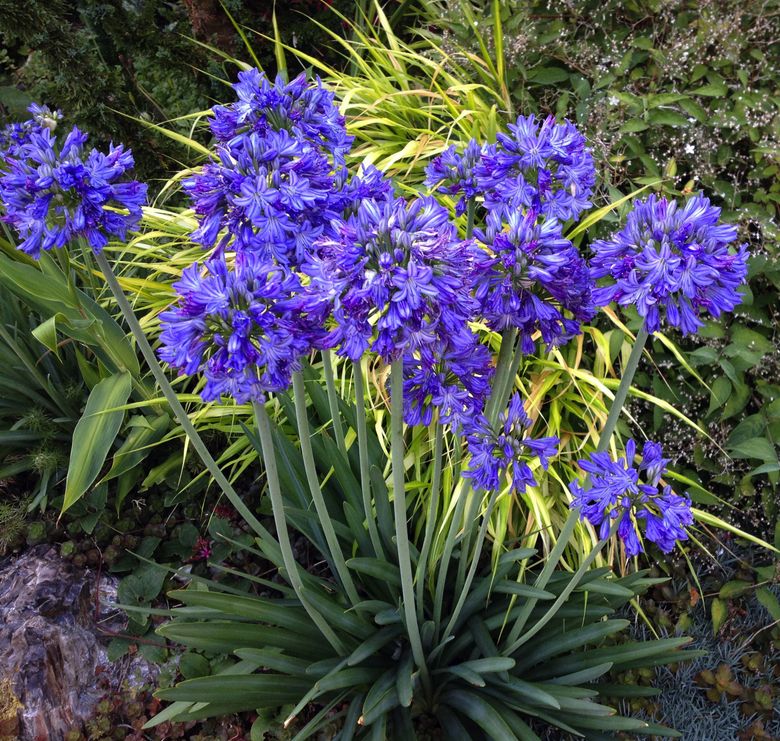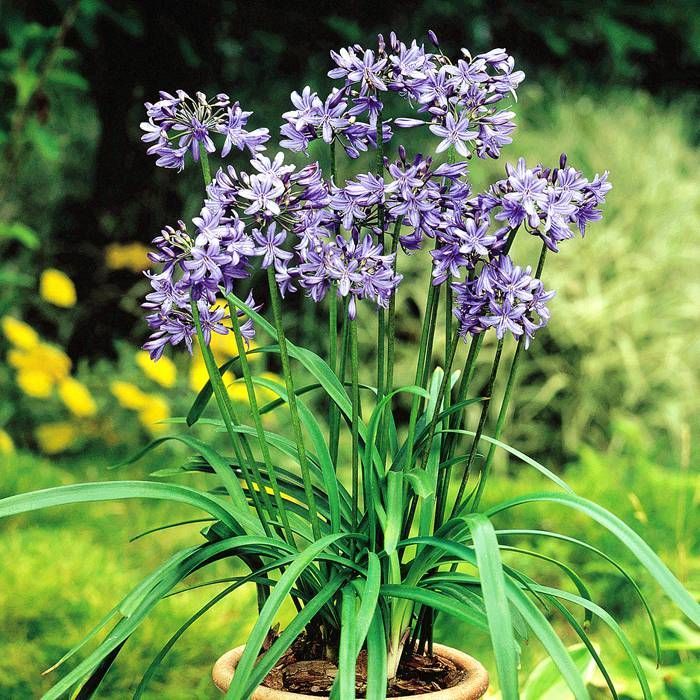Just how to Plant and Maintain Agapanthus in Your Yard
Just how to Plant and Maintain Agapanthus in Your Yard
Blog Article
Releasing the Secret to Effective Agapanthus Farming: Idea for a Flourishing Yard
In the realm of gardening, cultivating agapanthus effectively needs a strategic approach that incorporates numerous facets of plant treatment. With careful interest to information, one can open the secrets to nurturing these sensational flowers, bring about a yard that thrives with charm and vibrancy. By recognizing the subtleties of agapanthus farming, one can develop an atmosphere where these plants grow and bloom perfectly. In the complying with conversation, we will check out important suggestions and techniques that will lead you towards a thriving agapanthus yard, using understandings into finest methods, dirt conditions, watering techniques, and a lot more.
Planting Agapanthus: Best Practices
When growing Agapanthus, proper dirt prep work is essential for guaranteeing effective growth and development of these gorgeous blossoms. Agapanthus, typically called Lily of the Nile or African lily, thrives in well-draining dirt with a slightly acidic to neutral pH level - Agapanthus. Before growing, it is vital to change heavy clay soils with natural issue such as compost or peat moss to improve drain and give necessary nutrients for the plants
To plant Agapanthus, select an area that obtains full sunlight to partial color, as this will certainly advertise healthy and balanced development and abundant blooming. Dig a hole twice the diameter of the plant's origin round and put the Agapanthus at the exact same depth it was formerly expanding. Delicately backfill the opening with dirt, pressing down securely to remove any kind of air pockets around the roots.
Water the newly grown Agapanthus completely and remain to keep the dirt equally wet, especially during the plant's active expanding period. Agapanthus. Using a well balanced plant food once a month can further sustain the plant's growth and blooming. By complying with these finest techniques for planting Agapanthus, you can develop a spectacular screen of these captivating blossoms in your yard
Ideal Soil Conditions for Agapanthus
For optimum growth and growing success of Agapanthus plants, ensuring the dirt problems are excellent is vital. Agapanthus likes dirt that is abundant in nutrients, so including a balanced fertilizer during the growing period can promote healthy and balanced growth and vivid flowers.

Watering and Fertilizing Tips
To guarantee healthy and balanced growth and vivid blooms, correct watering and fertilizing strategies are important for successful Agapanthus growing. Agapanthus plants benefit from routine watering, specifically during the growing season. It is advised to water deeply as soon as a week, making sure the soil is moist yet not waterlogged. Throughout hot weather condition or in pots, more frequent watering might be required to stop the dirt from drying entirely.
When it involves fertilizing Agapanthus, a well balanced fertilizer with equivalent parts nitrogen, phosphorus, and potassium can be used in the springtime to advertise healthy and balanced growth and blooming. Slow-release plant foods are perfect for supplying nutrients slowly over an extended duration. Prevent over-fertilizing, as this can cause excessive foliage growth Recommended Site at the expense of blossoms.
Furthermore, incorporating natural matter like garden compost into the dirt can improve nutrient degrees and enhance soil structure, helping in the total health of the Agapanthus plants. By following these watering and feeding tips, garden enthusiasts can guarantee their Agapanthus plants flourish and generate spectacular screens of blossoms.
Pruning and Deadheading Techniques
Proper trimming and deadheading methods play a vital role in maintaining the wellness and appearances of Agapanthus plants, matching the essential practices of watering and feeding for successful cultivation. Pruning Agapanthus entails getting rid of invested flower heads, dead or yellowing fallen leaves, and total shaping of the plant to advertise better development. Deadheading, the procedure of removing faded flowers, not just boosts the plant's appearance yet also motivates further flowering.
When deadheading Agapanthus, it is suggested to snip off the flower stem at the base utilizing sharp, tidy shears. This process reroutes the plant's energy from seed manufacturing back into origin and vegetation growth, advertising a much healthier and more durable plant. Normal deadheading can extend the growing duration of Agapanthus and prevent self-seeding, which can bring about overcrowding.
In terms of trimming, Agapanthus usually take advantage of a light trim after blooming to clean up the plant and motivate fresh growth. Cutting down the spent flower stems and removing any dead or damaged foliage assists preserve the plant's vigor and overall appearance. However, it is crucial to stay clear of cutting into the crown of the plant, as this can deteriorate its health and wellness.

Protecting Agapanthus From Vermins and Diseases
Applying effective bug and disease administration methods is crucial to securing the health and vigor of Agapanthus plants in farming. One typical bug that influences Agapanthus is the Agapanthus borer, a caterpillar that tunnels into the plant, triggering damages to the fallen leaves and flowers.
Along with insects, Agapanthus are prone to conditions such as origin rot and fungal leaf spots. These problems can often be avoided by making sure proper water drainage and find out this here preventing overwatering. If indications of condition show up, affected parts of the plant need to be quickly eliminated to stop further spread. Fungicides Full Article may additionally be made use of as a treatment step, adhering to the supplier's guidelines meticulously. By remaining watchful and addressing parasite and disease problems immediately, garden enthusiasts can help their Agapanthus prosper and grow.

Verdict
In conclusion, effective cultivation of agapanthus calls for appropriate growing techniques, suitable dirt conditions, adequate watering and feeding, regular pruning and deadheading, and defense from bugs and conditions. By complying with these tips and tricks, gardeners can make sure a prospering yard full of gorgeous agapanthus flowers. Agapanthus. Remember to preserve regular treatment and interest to information to advertise the health and longevity of these stunning plants
When planting Agapanthus, proper soil preparation is important for making certain effective development and development of these lovely flowers.Water the recently grown Agapanthus extensively and proceed to maintain the dirt uniformly damp, particularly throughout the plant's energetic expanding season.For ideal development and flowering success of Agapanthus plants, making sure the dirt conditions are optimal is critical. When planting or transplanting Agapanthus, ensure the soil is well-prepared to give the required foundation for the plants to develop themselves efficiently. One common parasite that influences Agapanthus is the Agapanthus borer, a caterpillar that passages right into the plant, triggering damage to the leaves and flowers.
Report this page